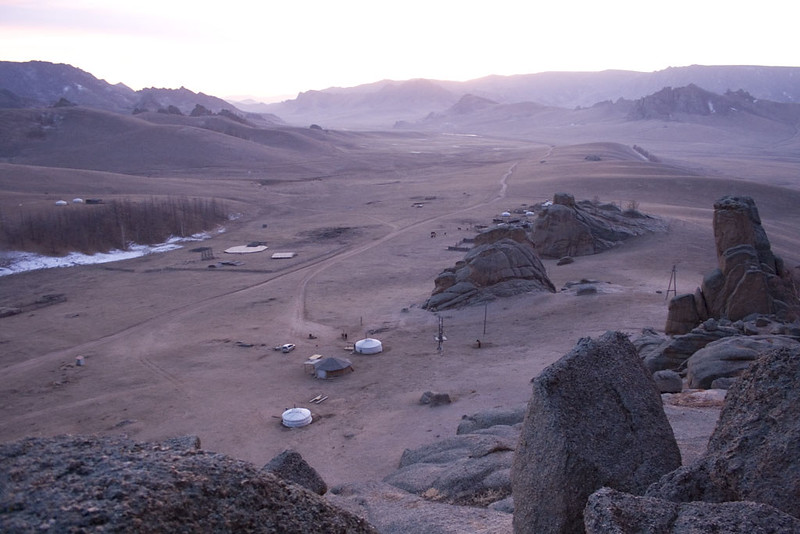 Uruguay, a republic located in South America, has spent the past several months recovering from a drought that lasted more than three years. The drought was severe, to the point where authorities were mixing seawater with freshwater to try and amend the problem— accidentally rendering it completely undrinkable in the process. While things have gotten much better amid more rainfall and administration changes, water scarcity in Uruguay remains a concern for its citizens due to the construction of data centers. These data centers are projected to use unsustainable amounts of water.
Uruguay, a republic located in South America, has spent the past several months recovering from a drought that lasted more than three years. The drought was severe, to the point where authorities were mixing seawater with freshwater to try and amend the problem— accidentally rendering it completely undrinkable in the process. While things have gotten much better amid more rainfall and administration changes, water scarcity in Uruguay remains a concern for its citizens due to the construction of data centers. These data centers are projected to use unsustainable amounts of water.
What Is a Data Center?
Most internet netizens are familiar with “the Cloud,” where users can remotely store data instead of keeping it on their devices. This data cannot just be nebulously stored on the internet, though; it has to go somewhere physical to be stored. Data centers are the answer to this, containing warehouses of servers that process and house cloud data along with the machines that help make AI technology work.
These computers need lots of water to stay cool with a typical data center using an average of 300,000 gallons of water a day. Some data centers can even use upwards of a million gallons of water a day. Since the process of cooling down computers heats the water, it cannot be dumped back into the systems where it came from since thermal pollution has been known to destroy entire ecosystems.
This process also has the potential to leave chemicals or other impurities that render the water unfit for human consumption. Many worry that the introduction of this technology in Uruguay could prove catastrophic, given the water scarcity in Uruguay.
The Effect on Uruguay
Water scarcity in Uruguay continues to be a prime concern for its citizens and the announcement of a new data center only further exacerbated these concerns. The initial announcement drew so much controversy that many locals took to the catchphrase “It’s not drought, it’s pillage” amid protests. Experts also worry about the long-term ramifications of data centers posing a drain on Uruguay’s very limited water supply.
While the country is still recovering from the prior drought, the insecurity and ecological decimation it brought can still be felt in many areas. A new proposal for the data center was created, with an emphasis on using air conditioning to cool the computers instead of water. Unfortunately, academics conclude this would be just as damaging environmentally. While it is true the amount of water would be lessened, the air pollution and stress on the electrical grid far outweigh any good proposed by the new solution.
Advancements in Technology
Data centers use large amounts of electricity and water to operate, but this does not have to be a negative thing due to recent advancements. Many data centers have turned to using reclaimed wastewater or sewage, to cool their systems instead of relying on drinkable water. Other companies have proposed the idea of recycling the water used in data centers to create a self-sufficient model of water usage.
Advancements such as these would greatly lessen the impact on drinkable water if implemented in Uruguay. Google, the company building and operating the data centers, has been vocal about not wanting to harm Uruguay through the creation of the data center. On the contrary, Google has offered to collaborate with local universities to provide more technology-focused content in their curriculums in order to bolster Uruguay’s tech business and advancements.
Moving Forward
While Uruguay continues to recover from prior droughts, water scarcity in Uruguay continues to be an issue for it. Many worry that the creation of a data center continues to threaten Uruguay’s water supply. However, recent technological advancements and renewed promises for compromise between Google and the Uruguayan people offer a brighter future moving forward.
– Mackenzie Scott
Mackenzie is based in Indianapolis, IN, USA and focuses on Technology and Solutions for The Borgen Project.
Photo: Flickr


 In 2019,
In 2019, 

 In Kenya,
In Kenya,  The Horn of Africa is suffering from its worst drought in 40 years, a crisis that has killed millions of livestock and plunged millions of people into food insecurity. In response to this historic drought in Africa, the U.S. Agency for International Development (USAID) has pledged
The Horn of Africa is suffering from its worst drought in 40 years, a crisis that has killed millions of livestock and plunged millions of people into food insecurity. In response to this historic drought in Africa, the U.S. Agency for International Development (USAID) has pledged  Madagascar, an island country located in the Indian Ocean, is one of the most impoverished countries in the world, with
Madagascar, an island country located in the Indian Ocean, is one of the most impoverished countries in the world, with  The Czech Republic is a Parliamentary Republic bordering Germany, Poland, Austria and Slovakia. The country was founded on January 1, 1993, following a political revolution, and peacefully splitting from the former
The Czech Republic is a Parliamentary Republic bordering Germany, Poland, Austria and Slovakia. The country was founded on January 1, 1993, following a political revolution, and peacefully splitting from the former  The period of 2018 to 2020 brought with it a series of difficulties for the people of Afghanistan, including droughts, floods and pandemics. A severe drought in 2018 impacted 95% of the country’s farmland and dried up crucial water sources. More than
The period of 2018 to 2020 brought with it a series of difficulties for the people of Afghanistan, including droughts, floods and pandemics. A severe drought in 2018 impacted 95% of the country’s farmland and dried up crucial water sources. More than